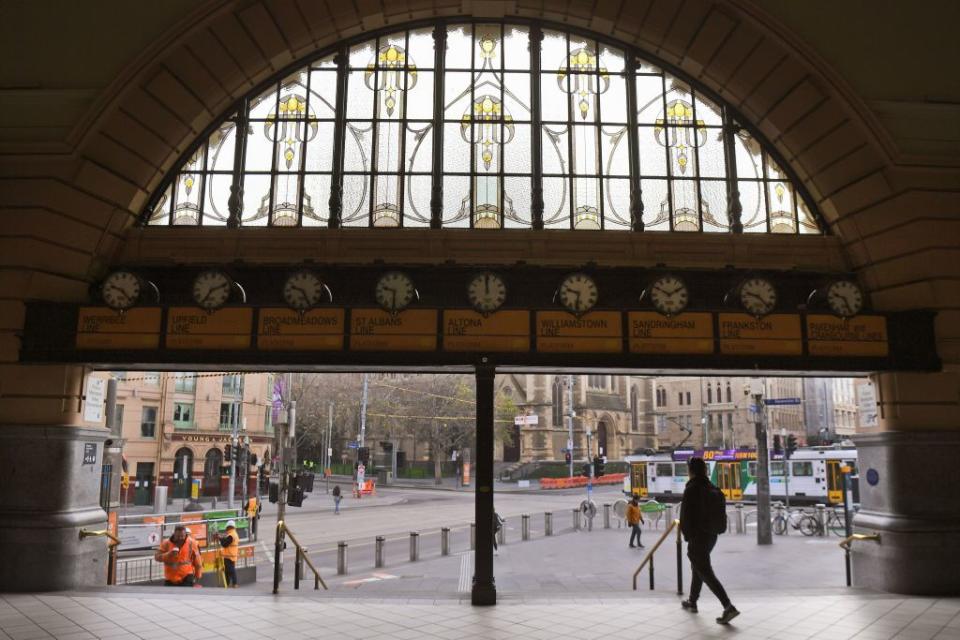Victoria's lockdown inflames 'catastrophic' recession

The second wave of coronavirus cases in Victoria will see Australia’s economic recovery set back by at least the end of the year, experts have said.
According to AMP Capital chief economist Shane Oliver, the severe lockdown in Victoria will see Australia’s recession likely run for three consecutive quarters.
“We estimate roughly a $12 billion hit from the lockdowns in Victoria up from the $5 billion hit that would have come from just the level 3 lockdown for Melbourne. This will knock around 2.5 per cent off September quarter Australian GDP and leave it flat or slightly negative,” he told Yahoo Finance.
Also read: ‘Devastating’: 250,000 Aussies dealt further Covid-19 blow
Also read: Unemployment to peak at 9.25% this December
Effective unemployment, which Treasurer Josh Frydenberg said in late July was likely around 11.3 per cent, will be pushed up to 12 per cent, Oliver added.
NAB chief economist Alan Oster said the coronavirus pandemic made recessions of the 1980s and 1990s “look like child’s play”.
“Unemployment did get to 11 per cent in the 1990s recession, but it took two years to get there,” he told ABC.
As Victoria accounts for a quarter of national GDP, the economic hit to the state will prolong the national recession, Oster said.
The strict measures of Victoria’s second lockdown will see 250,000 more jobs lost.
More stimulus needed, economists argue
Independent economist Stephen Koukoulas also echoed Oliver’s prediction that GDP would fall for three quarters straight, and that Victoria’s lockdown would shave 2.5 per cent off GDP in the September quarter.
A further 150,000 people would be added to the pool of unemployed and underemployed Australians, he added.
The stimulus packages of JobSeeker and JobKeeper alone would not be enough, Koukoulas said.
“The end game is that policy stimulus is urgently needed,” he said, adding that support for the six-week lockdown’s recovery phase was needed.
“This has to be outside JobKeeper/JobSeeker – this is spilling over to the housing market where evictions and mortgage arrears are about to be a huge problem.
“The worry too is that it is spilling over to the rest of the country - state border closures extended, sentiment damaged.”
The Australia Institute Centre for Future Work director and economist Jim Stanford said any signs of recovery before the new Victorian outbreaks had given way to a “double dip” in employment and GDP.
“I expect that GDP will start growing again by the December quarter, so by that traditional measure the recession will be ‘over’. But that will be cold comfort to the one-million-plus unemployed,” he told Yahoo Finance.
Either way, employment will be “well below” where it was at the end of last year, he said.
“It will take at least another year to get GDP back to where it was before the pandemic, and at least two to three more years to get unemployment back down to even 6 per cent (let alone full employment).
“So even if GDP stops shrinking and starts growing again before the end of 2020, it is going to feel like a recession for some years to come.”
Victorian outbreak will spread
Stanford also said the Covid-19 contagion won’t remain isolated in Victoria – and the economic effects will ripple out of the state.
“Victoria consumers account for about one-quarter of all consumer spending in Australia. That’s worth $275 billion per year, or over $5 billion per week. Many of the goods and services they normally purchase are made in other states. Plus, workplaces in other states depend on supplies and parts and services that normally come from Victoria.”
Victoria’s climbing case numbers are also a “bucket of ice water” over consumers’ and investors’ heads as they come to terms with the fact that the pandemic is still a present danger.
“That will have a very negative impact on sentiment and spending.”
No one should be holding out any hopes of a V-shaped recovery, Stanford said.
“Rebuilding the economy after this catastrophe will be a long, hard path – we aren’t even halfway there yet. Government will have to be providing even more spending power, and more income support (like paid pandemic leave), not less.
“The government’s decision to cut JobKeeper and JobSeeker by $300 per fortnight or more, and to limit pandemic leave payments only to Victoria, both seem very short-sighted.”
Make your money work with Yahoo Finance’s daily newsletter. Sign up here and stay on top of the latest money, economy, property and work news.
Follow Yahoo Finance Australia on Facebook, Twitter, Instagram and LinkedIn.

 Yahoo Finance
Yahoo Finance 

